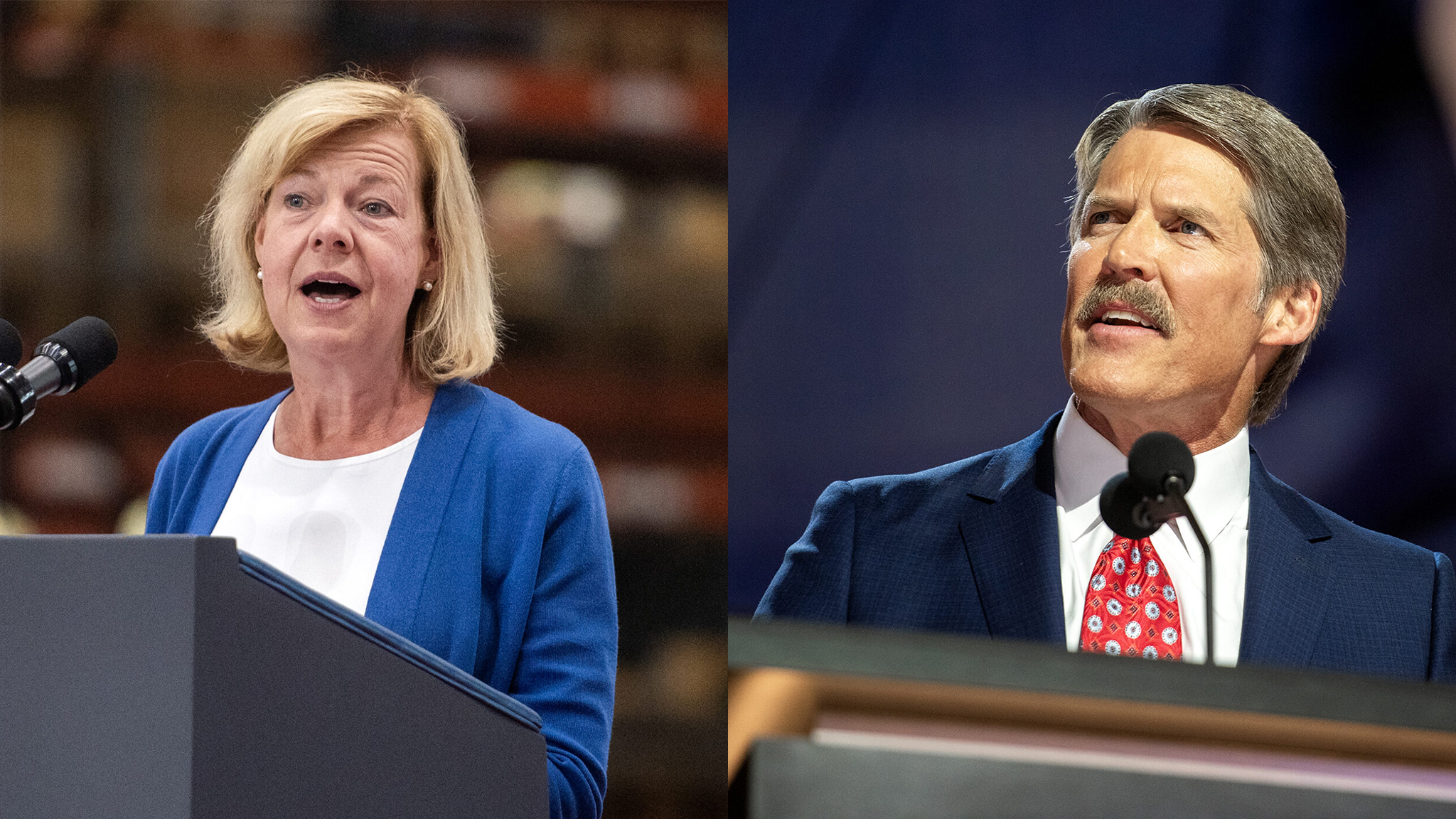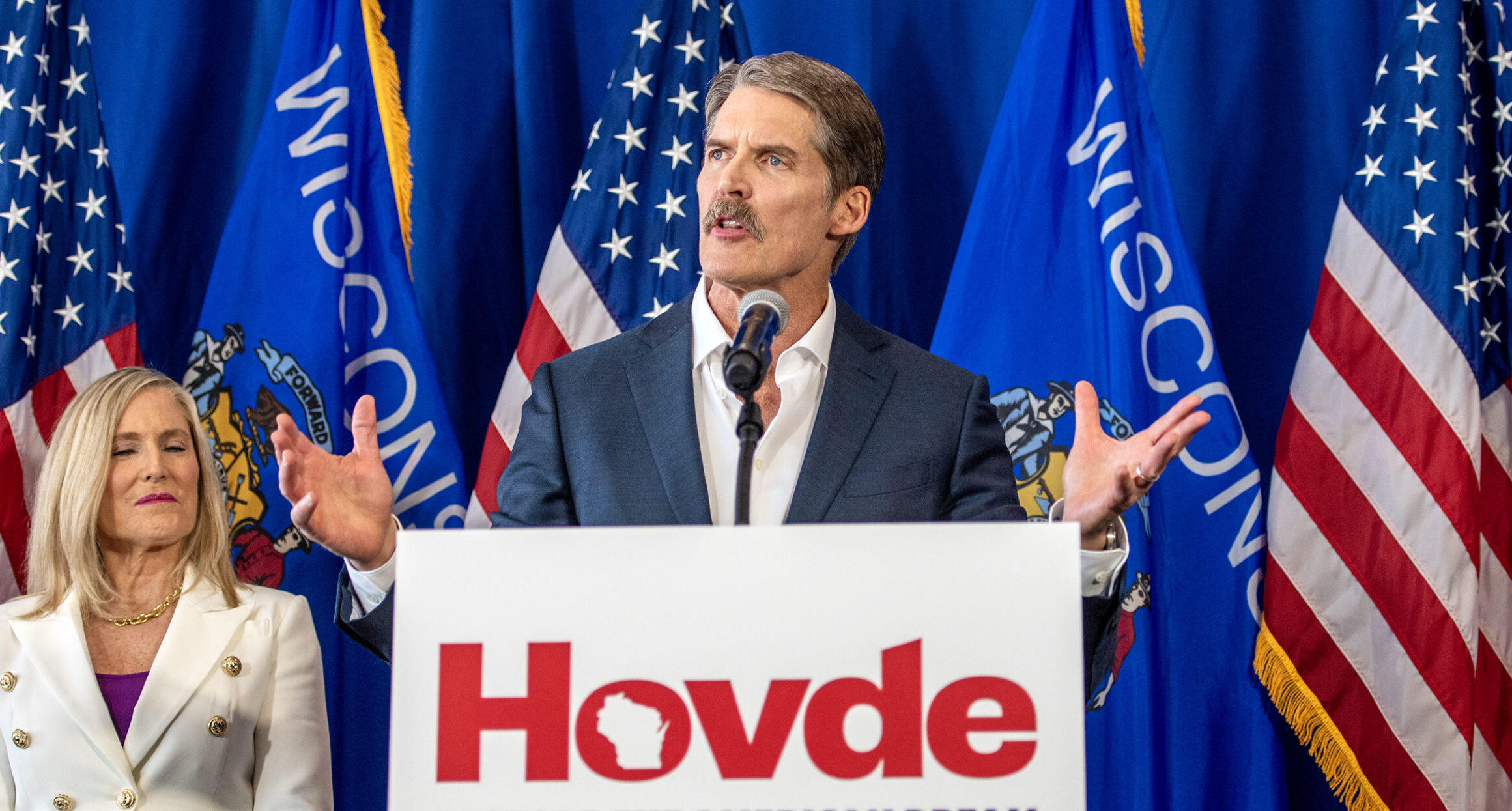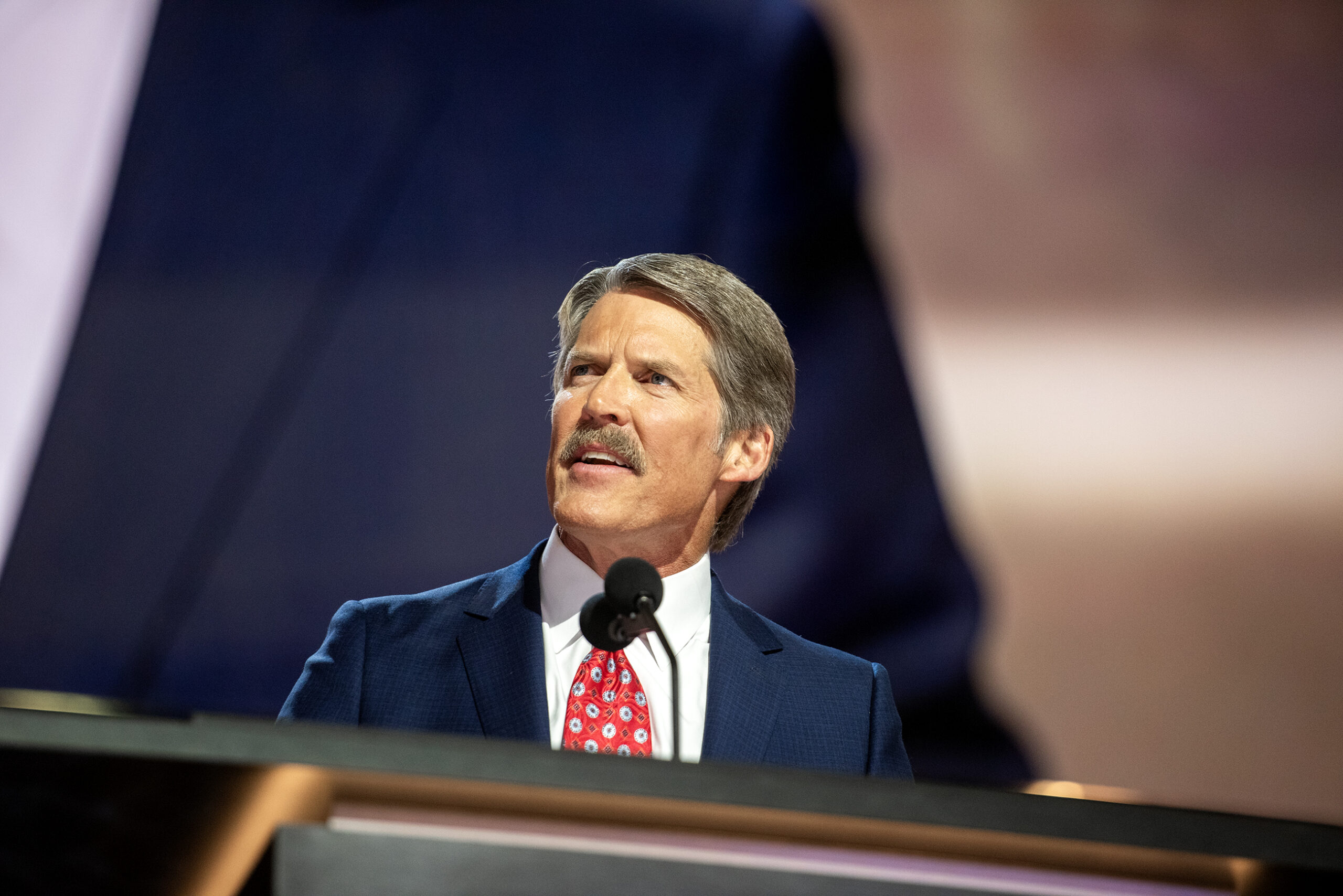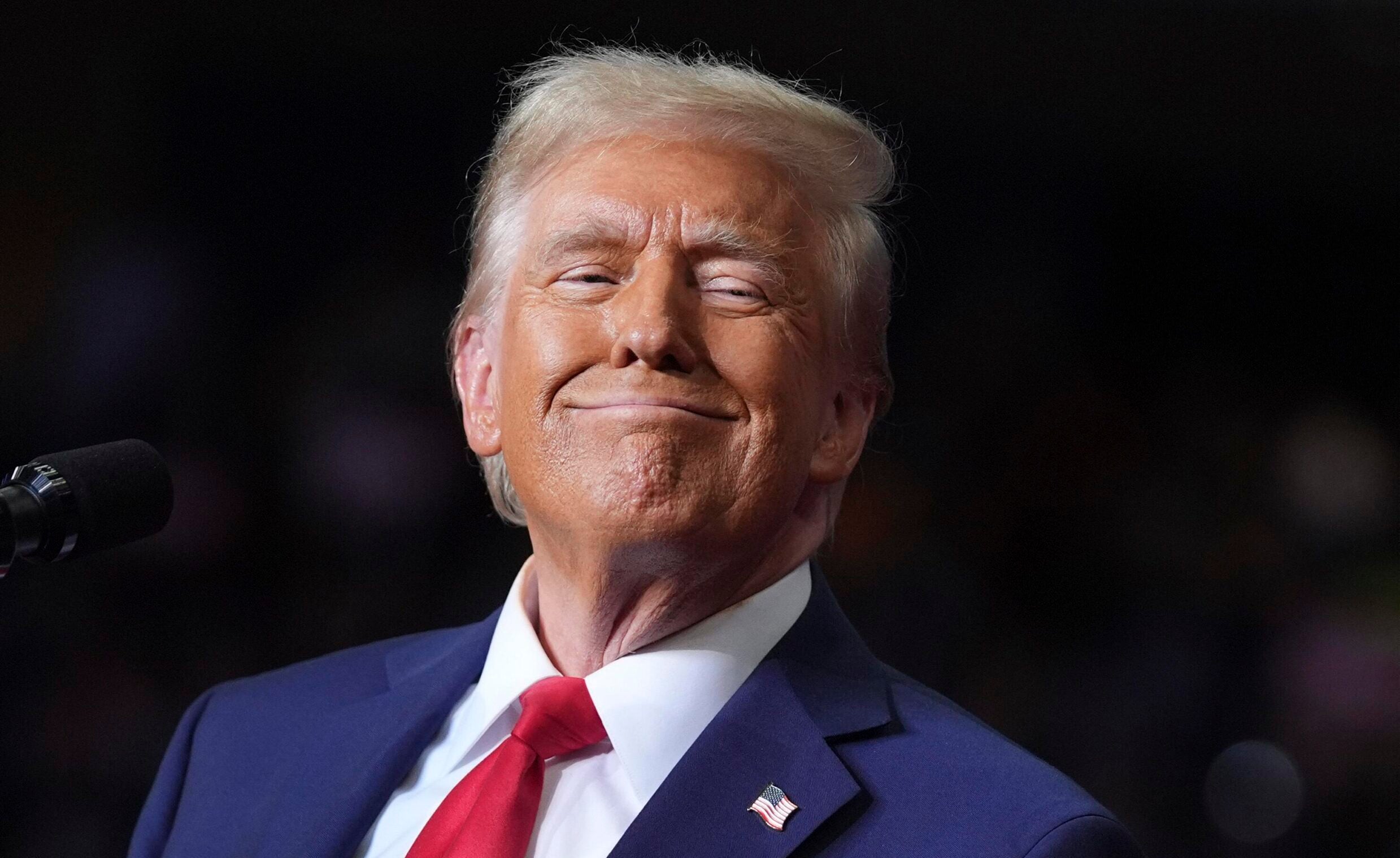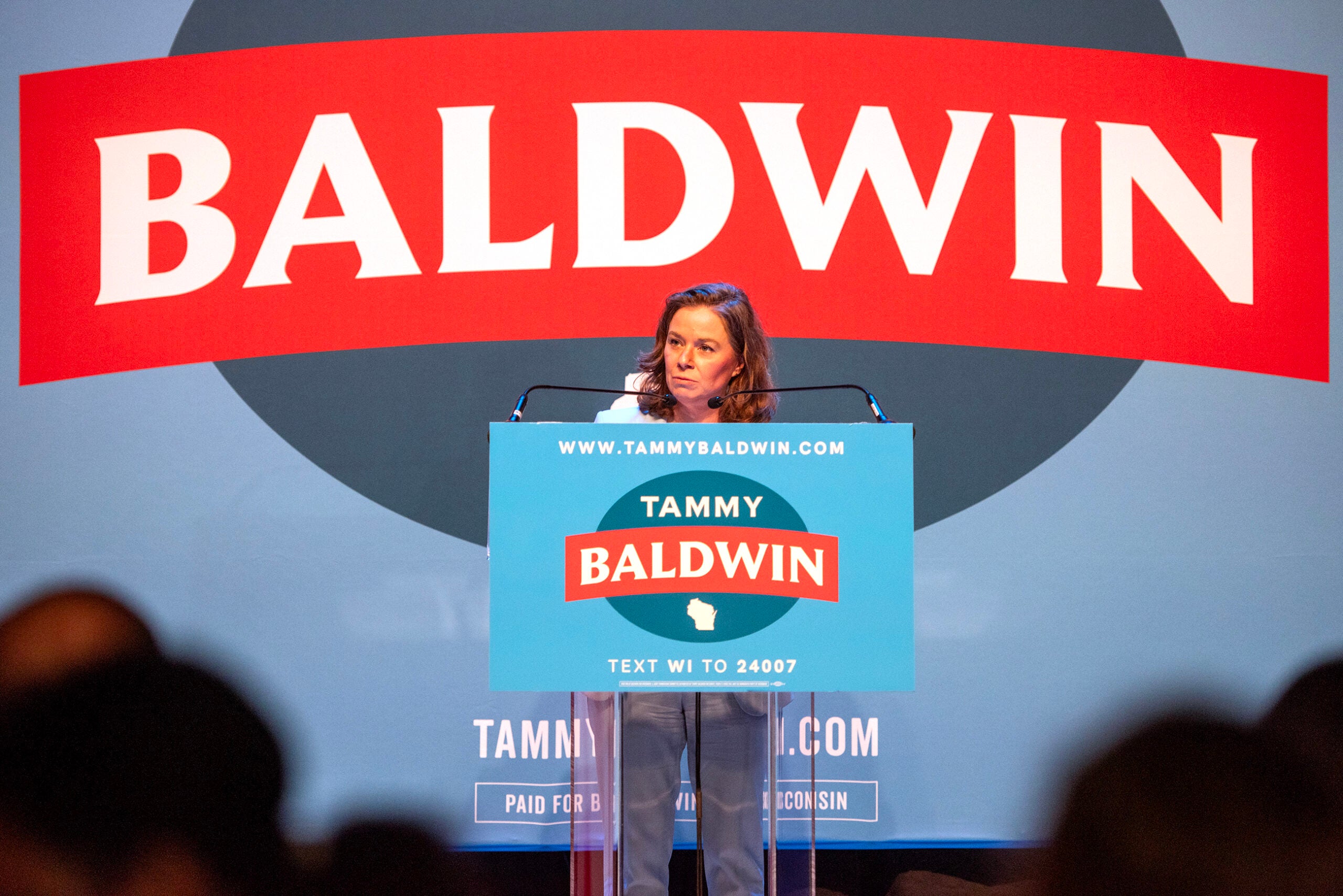Wisconsin’s U.S. Senate race between Democratic U.S. Sen. Tammy Baldwin and Republican challenger Eric Hovde remained too close to call as of Wednesday morning.
About 27,000 votes separated the two candidates as of 7 a.m., according to preliminary numbers by the Associated Press. Although the race has not been called by the AP, Baldwin declared victory at about 4:30 a.m.
In a statement, Baldwin said Wisconsin voters rejected “billionaires” and special interests.
Stay informed on the latest news
Sign up for WPR’s email newsletter.
“It is clear that the voters have spoken and our campaign has won,” Baldwin stated. “The people of Wisconsin have chosen someone who always puts Wisconsin first, someone who shows up, listens, and works with everyone to get the job done.”
Baldwin trailed in the race early Wednesday morning, but was boosted by absentee ballots in Milwaukee County that were being processed in the early morning hours after a sealing error on voting machines set back the count.
The close race came as Baldwin outperformed Vice President Kamala Harris in Wisconsin on a historic night for former President Donald Trump, who won the state and regained the White House.
In remarks at a GOP watch party in Pewaukee, Wisconsin Republican Party chairman Brian Schimming said Baldwin was in “the fight of her life” for the seat.
Baldwin did not address the crowd at her watch party. Hovde spoke briefly after 2:00 a.m. to tell supporters to go home and get some rest while they await the final numbers.
Close races are familiar territory in Wisconsin
Razor-thin margins are familiar territory for closely-divided Wisconsin, where statewide races are often decided by less than a percentage point, including four of the last six races for president.
In 2020, when President Joe Biden defeated Trump by 20,682 votes, the AP didn’t call Wisconsin until 1:16 p.m. on the Wednesday after the election.
In 2016, when Trump defeated Democrat Hillary Clinton by 22,748 votes, the AP called the race at 2:30 a.m. Wednesday.
Plenty of other races have seen close calls, too.
Gov. Tony Evers won his 2018 contest against then-Gov. Scott Walker in the wee hours of the morning after AP called his race at 1:24 a.m.. Evers defeated Walker by 29,227 votes.
In 2019, Wisconsin’s Supreme Court election was so close that the Associated Press decided not to call the race. Judge Lisa Neubauer eventually conceded to conservative Justice Brian Hagedorn a week later in a race Hagedorn won by just 5,981 votes.
In 2022, the AP didn’t declare Republican U.S. Sen. Ron Johnson the winner of his race against Democratic challenger Mandela Barnes until 11:46 a.m. the next day, to Johnson’s dismay. Johnson ended up winning by just 26,718 votes.
Election Day totals are unofficial
Results released by clerks and compiled by the AP in the hours and days after polls close are unofficial totals. The official numbers won’t be finalized for weeks.
Municipal boards of canvassers meet publicly following the election, and they have until Nov. 11 to finalize their canvasses of the results.
After municipalities are done, county boards of canvassers have until Nov. 19 to complete their work.
The county canvass gets sent to the Wisconsin Elections Commission, which has a Dec. 1 deadline to certify the statewide results.
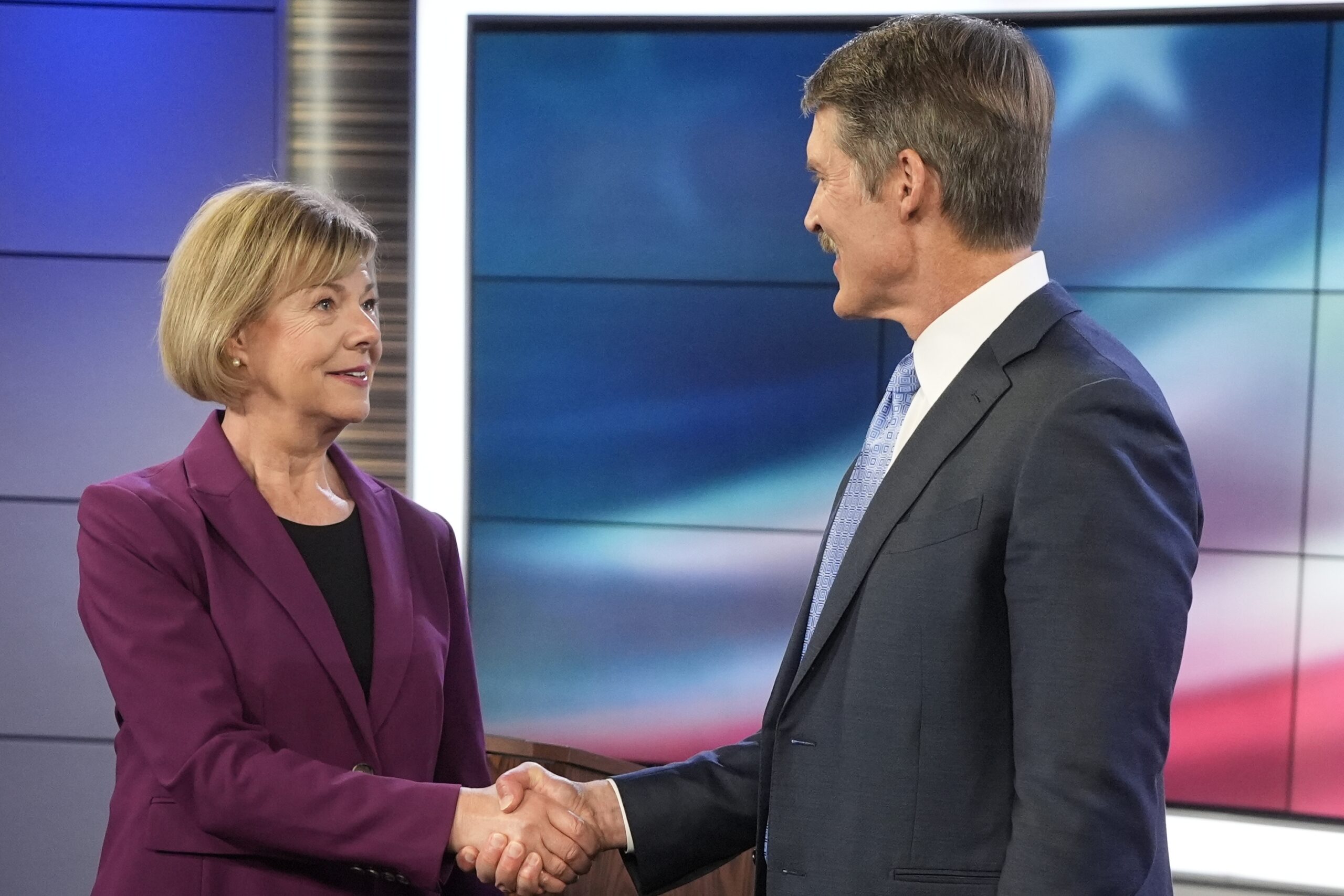
Recount possible if race is decided by less than 1 percent
Under a 2017 recount law, the losing candidates in a close race can request a recount if they finish within 1 percentage point of the winner.
Wisconsin Republicans passed the recount law after Green Party presidential candidate Jill Stein’s campaign requested a statewide recount of Wisconsin’s 2016 presidential election between Trump and Clinton. That recount resulted in very little change to Trump’s margin of victory.
Trump’s campaign requested a partial recount focused on Dane and Milwaukee Counties in 2020 after he finished within a percentage point of Biden. Biden’s margin grew slightly once the recount was complete.
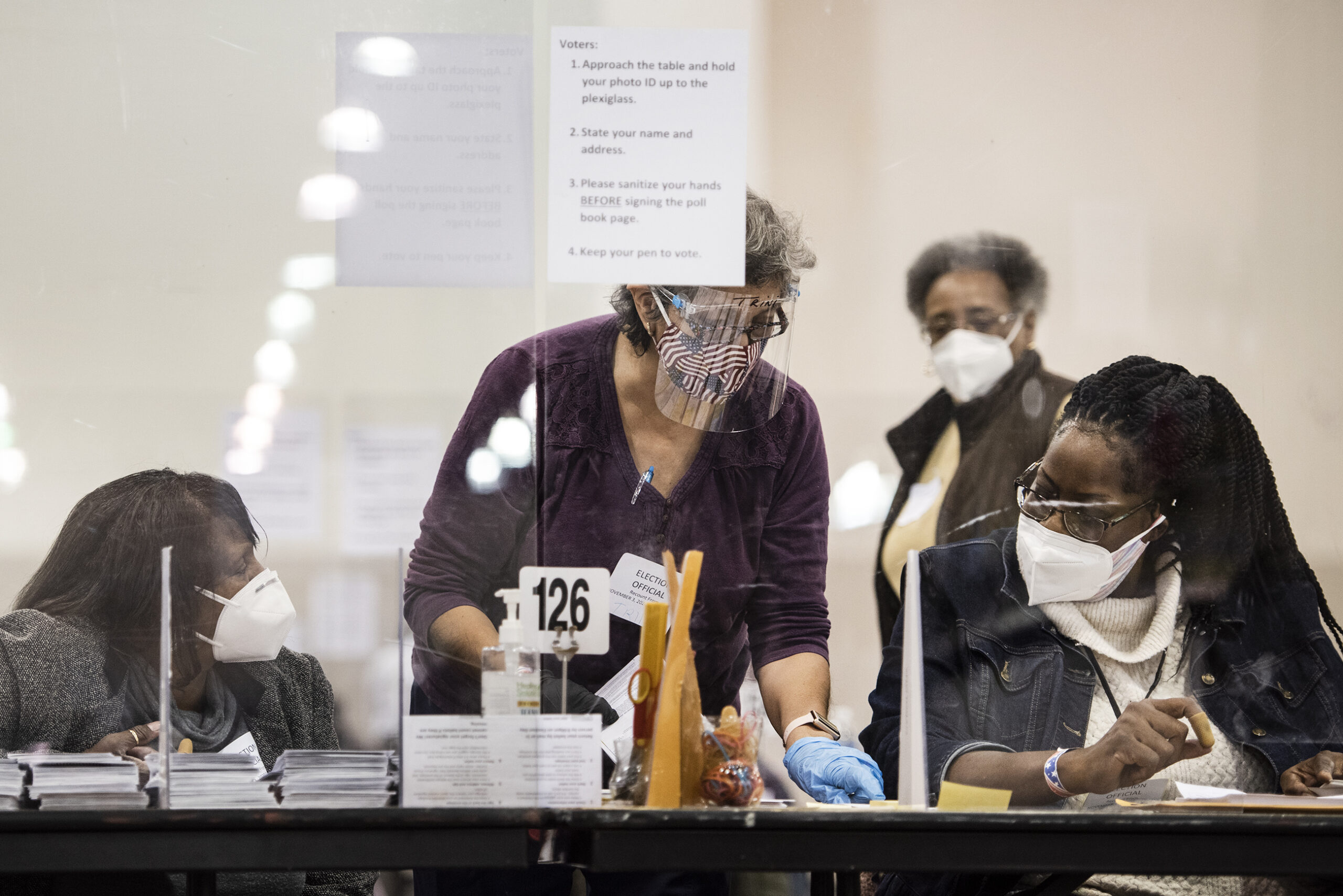
Some candidates don’t pursue a recount because the most likely outcome is that the result of the race won’t change. Neubauer, for example, didn’t request one even though her Supreme Court race was among the closest in Wisconsin in the past decade.
In Walker’s case, a recount wasn’t an option. He lost his 2018 race to Evers by 1.1 percentage points, which was just outside the 1 percent threshold set in the recount law Walker signed as governor.
The recount law is explained in detail in a Nov. 2024 memo on the WEC website.
Wisconsin Public Radio, © Copyright 2025, Board of Regents of the University of Wisconsin System and Wisconsin Educational Communications Board.
